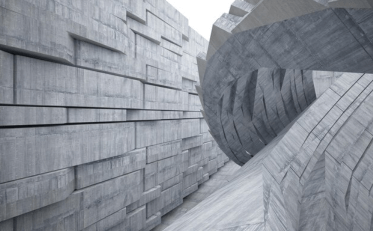Question
a.
A
b.
B
c.
C
d.
D
Posted under Civil Engineering
Interact with the Community - Share Your Thoughts
Uncertain About the Answer? Seek Clarification Here.
Understand the Explanation? Include it Here.
Q. If the moment of inertia of a section about its axis is I and its effective sectional area is A, its radius of gyration r about the axis, is
Similar Questions
Explore Relevant Multiple Choice Questions (MCQs)
Q. The critical load for a column of length I hinged at both ends and having flexural rigidity El, is given by
View solution
Q. Slenderness ratio of a compression member is
View solution
Q. The equivalent axial tensile load Pe, which produces an average axial tensile stress in the section equivalent to the combined stress due to axial tension P and bending M, at the extreme fibre of the section, is given by (where Z is the section modulus of the section).
View solution
Q. The area Ap of cover plates in one flange of a built up beam, is given by
View solution
Q. If flexural rigidity of a column whose length is L and the loaded end is free, is El, the critical load will be
View solution
Q. In a tension member if b is width of plate, t is thickness of plate, p is staggered pitch, g is gauge distance, n is number of rivet holes in zig-zag line, n is number of gauge spaces, d is gross diameter of rivets, then the net sectional area Anet of the plate, is
View solution
Q. An axial loaded column is supported on a slab base whose projection is 8 cm. If the intensity of pressure from concrete is 40 kg/cm² and allowable bending stress in slab base is 1890 kg/cm², the thickness (t) of the slab base, is
View solution
Q. If P is the load applied to a bracket with an eccentricity e, the resisting moment F exerted by a rivet at a distance rn from the centre of gravity, is
View solution
Q. In a member subjected to an axial tensile force and bending moment, the maximum allowable stress in axial tension is ft and the maximum allowable bending stress in tension is fht. If ft and fht are their corresponding actual axial tensile and bending stresses, the relationship which holds goods is
View solution
Q. The equivalent axial load is obtained from the formula
View solution
Q. If p and d are pitch and gross diameter of rivets, the efficiency (η) of the riveted joint, is given by
View solution
Q. A long plate girder is subjected to a maximum bending moment M in which permitted allowable bending stress is fb. The economical depth de and the thickness of the web tw, is given by
View solution
Q. In a grillage column footing maximum bending moment M occurs at the centre of grillage beams. Its value is (where P, L and a are axial load, length of the beam and length of the column base respectively).
View solution
Q. If f is the maximum allowable bending stress in a tension member whose radius of gyration is r and depth is 2y, the required cross sectional area A is given by
View solution
Q. For eccentrically loaded columns, the bending factor is
View solution
Q. Number of rivets required in a joint, is
View solution
Q. If d is the clear depth of a plate girder, t is the minimum required thickness of the web, C is the maximum clear distance between vertical stiffeners, the moment of inertia of a pair of stiffeners about the centre line of the web, is
View solution
Q. In a built up beam actual bending compressive stress fbc is given by (when y1 is the distance of the edge of the beam from the neutral axis).
View solution
Q. If a pair of angles placed back to back in tension are connected by one leg of each angle, the net effective area of the section, is
View solution
Q. If M is the moment due to a couple in a bearing plate whose width is b and allowable bending stress is P, the thickness (t) of the bending plate of the column splice, is
View solution
Recommended Subjects
Are you eager to expand your knowledge beyond Civil Engineering? We've handpicked a range of related categories that you might find intriguing.
Click on the categories below to discover a wealth of MCQs and enrich your understanding of various subjects. Happy exploring!








